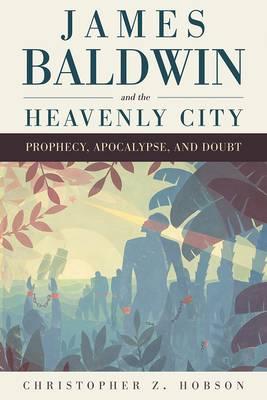
- Afhalen na 1 uur in een winkel met voorraad
- Gratis thuislevering in België vanaf € 30
- Ruim aanbod met 7 miljoen producten
- Afhalen na 1 uur in een winkel met voorraad
- Gratis thuislevering in België vanaf € 30
- Ruim aanbod met 7 miljoen producten
Zoeken
James Baldwin and the Heavenly City
Prophecy, Apocalypse, and Doubt
Christopher Z Hobson
Hardcover | Engels
€ 55,45
+ 110 punten
Omschrijving
Behind James Baldwin's uncanny ability to evoke a nation's crisis and potential hope lies his use of religious language to describe social and sexual transformation. The first study of its kind, James Baldwin and the Heavenly City shows that Baldwin's novels use biblical ideas in partly but not fully secularized ways to express the possible human attainment of a new life embodying a real but undefinable holiness. Focusing on Baldwin's six novels, along with essays, stories, and drama, the book first shows Baldwin's method of recasting biblical and African American prophetic traditions to reveal their liberating core. It then examines several key themes: the prophet's selection, seen in Baldwin's debut novel, Go Tell It on the Mountain; the three linked ideas of prophetic art, the "apocalyptic body," and the "apocalyptic city," as presented in all his novels; and the polarity between prophecy and doubt, the subject of his last novel, Just Above My Head. This important work provides new readings of Baldwin's novels, reassesses his once-neglected later fiction, and shows Gospel music's centrality (with blues) in his fictional imagination.
Specificaties
Betrokkenen
- Auteur(s):
- Uitgeverij:
Inhoud
- Aantal bladzijden:
- 258
- Taal:
- Engels
Eigenschappen
- Productcode (EAN):
- 9781611862898
- Verschijningsdatum:
- 1/08/2018
- Uitvoering:
- Hardcover
- Formaat:
- Genaaid
- Afmetingen:
- 160 mm x 231 mm
- Gewicht:
- 521 g

Alleen bij Standaard Boekhandel
+ 110 punten op je klantenkaart van Standaard Boekhandel
Beoordelingen
We publiceren alleen reviews die voldoen aan de voorwaarden voor reviews. Bekijk onze voorwaarden voor reviews.











